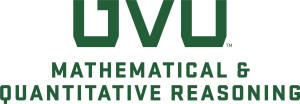What is Numeracy?
Numeracy
The term numeracy was first used in 1959 in the UK Crowther Report( p.268) [1], where it was characterised as “the mirror image of literacy”. Since then, numeracy has been defined and interpreted in different ways globally, depending on the needs of the user.
Many adults are unaware of the ways in which mathematics is used in the course of their everyday lives. When adult learners need to use mathematics it is always in context. Numeracy is the bridge between mathematics and the diverse contexts that exist in the real world. Put simply, numeracy is the ability to use and reason with numbers. Being numerate means that a person is confident in their ability to use math in the real world; is able to interpret numerical data in the form of graphs, tables, spreadsheets and statistics; can reason mathematically and make judgements based on that reasoning. Numeracy has an influence on healthy behaviors, financial literacy, and career decisions. A numerate person can manage and respond to the mathematical demands of life.
Numeracy includes number and operation sense. The American Mathematical Association of Two-Year Colleges (AMATYC, 1995)[2] recognizes that students should develop a sense of how numbers work for the purpose of being able to use mathematics effectively in their future roles in society, as well as establishing a foundation for further study:
Number Sense
Number sense involves the intuitive understanding of the properties of numbers and the ability to solve realistic arithmetic problems using appropriate mathematical tools.
Real versus Realistic Problems
You may notice that the definition of number sense includes the ability to solve realistic arithmetic problems. Why not real arithmetic problems? What’s the difference? Well, real problems may have so many more variables to consider than realistic problems.
For example, a real problem may be, “How much will it cost to put hardwood flooring throughout the house?”. Some of the possible variables are:
How big is the house? What’s the area of flooring required?
Is this going to contracted or is it DIY?
What’s the family’s budget? How much can they afford to spend?
What’s their timeline? How fast do you they need the work done? Time costs money.
What type of wood do they want to use? Some hardwoods are way more expensive than others. Some will need to be special ordered, while others will be available locally.
Decisions need to be made in real problems that don’t need to be made in realistic problems.
A similar realistic problem may be, “Calculate the cost of putting red oak hardwood flooring throughout a 2800 square foot home. A local contractor charges $8.99 per square foot to install the hardwood. The red oak hardwood costs $5.29 per square foot to buy and comes in boxes that cover 22 square feet. The hardwood must be bought by the box.”
With a realistic problem, there are no decisions to be made. All of the information needed to solve the problem is given, and everyone solving the problem should get the same answer.
This book considers both types of problem. Students will learn by completing mainly realistic problems, but there will be a few real problems throughout the chapters that may require research and a real project at the end of each chapter, where decisions will have to be made.
Content
We leaned heavily on the information contained in The Components of Numeracy (Ginsberg, Manly & Schmidtt, 2006)[3] The numeracy content in this book focuses around 4 main mathematical strands, and while these strands may be interwoven in the curriculum, each strand comes with its own content:
- Number and Operation Sense: relative size and representation; place value; computation; estimation; operations; relationship
- Patterns, Functions, and Algebra: language and representation (e.g., tables; charts; graphs; constants; variables); structure and properties; mathematical modeling
- Measurement and Shape: direct measurement (e.g. using a ruler or tape; standard units; unit conversion); indirect measurement (e.g., proportionality); attributes of shapes; perimeter, area, and volume; coordinate plane
- Data, Statistics, and Probability: collection, organization, and display of data (e.g. tables, charts, and graphs); analysis and interpretation of data (e.g., descriptive statistics)
This leads to 7 chapters that make up this book:
Numeracy
Chapter 1: Number Sense
Chapter 2: Measurement
Chapter 3: Relative Measurement
Chapter 4: Data Measurement
Chapter 5: Linear Equations in One Variable
Chapter 6: Linear Growth
Chapter 7: Exponential Growth

- The Crowther Report (1959). A report of the Central Advisory Council for Education (England). London: Her Majesty's Stationery Office 1959. ↵
- American Mathematical Association of Two-Year Colleges (AMATYC). (1995). Crossroads in mathematics: Standards for introductory college mathematics before calculus. ↵
- Ginsberg, L., Manly, M., & Schmidtt, M.J., 2006. The components of numeracy. Occasional Paper for the National Center for the Study of Adult Learning and Literacy, Harvard University. ↵

